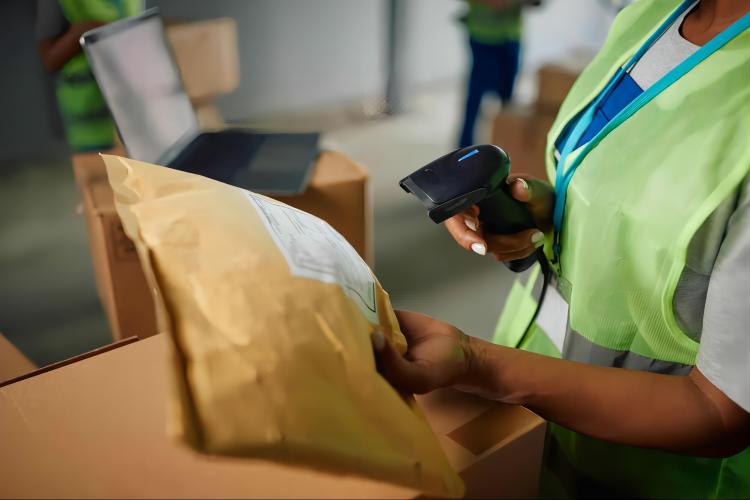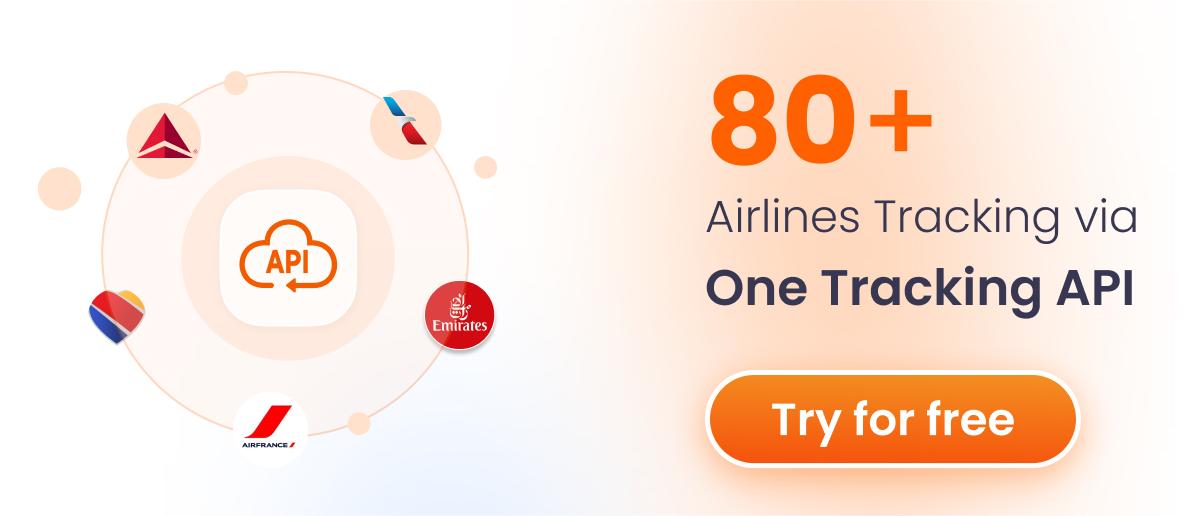Air cargo tracking is the process of monitoring the status and location of air freight shipments throughout their journey.
To track air cargo, shippers and recipients simply require the Air Waybill (AWB) number, which serves as the unique tracking number associated with each shipment. By inputting this number into the tracking systems provided by airlines or freight forwarders, businesses can stay informed about the real-time status of their air freight.
Business owners can streamline this process by importing AWB numbers directly into the airline or freight forwarder’s system, enabling improved tracking capabilities. However, for a more centralized approach to air shipment tracking, utilizing a third-party AWB platform is often recommended, as it provides multi-airline support and enhanced visibility.
In this comprehensive blog post, we will delve into the intricacies of air cargo tracking, including how air cargo tracking works, how to track air freight, its benefits, and the challenges you can expect while tracking shipments by air. Whether you are a seasoned logistics professional or new to the world of air freight, this guide will equip you with the knowledge to optimize your supply chain management through effective air cargo tracking.
Key Components of Air Cargo Tracking
Effective air cargo tracking through the air transport system is heavily reliant on a combination of devices and technologies that help in the monitoring and managing movement of the cargo.
Identification Tags
Identification Tags are either physical or digital labels attached to air cargo, providing a unique identifier for each shipment. These tags are essential for tracking and managing cargo throughout its transport journey. Some common types of identification tags include barcodes, QR codes, and RFID tags.
Data Capture Devices
Data capture devices serve the primary purpose of capturing information relating to air cargo and updating this to the air cargo track and trace system in place. Most of these devices feature scanning capabilities that enable them to read the information from the identification tags. The most popular data capture devices used in air cargo tracking include barcode scanners, handheld devices, and RFID readers.
GPS Tracking
Logistics companies use GPS (Global Positioning System) on planes, trucks, and containers for real-time cargo tracking. GPS devices enable logistics companies to track cargo, communicate updates, and guarantee on-time delivery.
Tracking Software
Tracking Software is a centralized system that collects all tracking information, including GPS coordinates and scans from identification tags, and presents it in a user-friendly dashboard to enable easy monitoring of air cargo movements. Additionally, it can often provide features such as shipment status updates, exception alerts, and route optimization.
How Does Air Cargo Tracking Work?
The air cargo tracking workflow can be simplified into four main steps that ensure the smooth and transparent movement of cargo through the air transportation system as follows.
1. Shipment Labeling
The first step is shipment labeling. The label carries all the essential information about the package, including its weight, dimensions, origin, destination, and contents. Each label also includes a unique identifier, serving as a critical component for tracking. It enables the automated scanning and tracking of air cargo at various stages of its journey, ensuring seamless access to detailed information stored in a tracking system or database.
2. Data Collection
After labeling the shipment, the tracking procedure flows to the next step which is to collect data concerning the package. The air freight carrier will employ data capture devices to scan the unique identifiers at each stage of the shipment’s journey.
The scanning devices at these different checkpoints which include warehouses, airports, sorting facilities, and storage hubs capture real-time information about the package’s movement, its condition, and location. Once captured, the information is then relayed to a centralized tracking system.
3. GPS Monitoring
Some logistics companies use GPS to precisely track air freight in real-time, especially for sensitive or high-value items. It significantly reduces the risk of loss or theft and improves the efficiency of the supply chain. Moreover, with the advent of advanced analytics, this data can also be used to optimize routes, predict potential delays, and enhance overall delivery performance.
4. Accessing Tracking Information
The final step involves accessing the air cargo’s tracking information via an online portal, mobile app, or tracking software. Individuals are advised to track their air shipments through the airline’s official website or through third-party shipment tracking services. Businesses, on the other hand, require solutions capable of intelligently tracking millions of cargo like EDI systems and API integration.

How to Track Air Cargo Shipments
Businesses rely on two main methods of tracking air cargo shipments. These are:
EDI Systems
Electronic Data Interchange (EDI) systems allow two computer systems to exchange standardized electronic documents. For air cargo tracking, EDI systems streamline the communication of status updates and manifests between shippers and carriers.
EDIs have been in use for a long time in the supply chain industry because of the benefits they offer such as improved accuracy in data input, reduced cycle times in information exchange, and improved efficiency.
For cargo shipments, EDI systems provide shipment status updates including departure and arrival times and information on delays and other exceptions. Most of this data is exchanged in real-time or near real-time.
API Integration
Application Programming Interface (API) is the more modern method that businesses around the world use to track air cargo shipments. API integration allows different software applications to communicate and share data in real time. For instance, integrating a shipping estimate API allows for auto shipping price estimates online, offering customers instant access to shipping costs alongside their shipping options.
In the context of air cargo tracking, these APIs allow for seamless integration across the supply chain. This integration facilitates the automatic sharing of tracking data, status updates, and critical documents, such as air waybills and cargo manifests, enhancing efficiency and improving the accuracy of information available to all parties involved.
Many businesses are now preferring air cargo tracking API solutions over EDI systems. Below are the reasons.
- Real-time Tracking: Through API integration, organizations can access shipment tracking data in real time. This allows for monitoring the status of the cargo as it continues its journey. A business is also empowered to make proactive decisions and improve its exception handling.
- Seamless Integration: API integration is especially beneficial because it allows for seamless integration with other logistics systems, enabling data exchange between different systems without manual intervention. This way, business workflows are streamlined, data entry errors reduced, and operation efficiency improved.
- Customization and Flexibility: Businesses can customize features to meet their specific tracking needs through different API calls. This flexibility enables quick adaptation to changing market conditions and customer demands.
- Scalability: APIs are scalable to accommodate the increasing volume of data and transactions of a business. With API integration, businesses are guaranteed that they can handle growing Air Waybill tracking demands without compromising on performance.
- Enhanced Customer Experience: APIs can be configured to send push notifications or emails to customers about important milestones or changes in shipment status, such as delays or arrival notifications. This proactive communication keeps customers informed and can reduce the need for them to check the status manually.

Benefits of Efficient Air Cargo Tracking
End-to-end air cargo tracking offers a myriad of benefits to businesses that implement such a system. These benefits include the following.
Enhanced Visibility and Control
Efficient Air Waybill tracking ensures real-time shipment visibility, identifying delays or pertinent issues in the supply chain. Therefore, stakeholders can take the necessary action needed to mitigate delays and guarantee on-time delivery of shipments.
Optimized Inventory Management
Air cargo tracking plays a crucial role in optimizing inventory management by providing precise information on the whereabouts and estimated arrival times of shipments. This real-time data enables businesses to reduce excess stock and minimize storage costs, as they can align their inventory levels more accurately with anticipated demand.
Streamlined Operations
A key feature of efficient air cargo tracking is the automation of processes including documentation, compliance procedures, and communication between stakeholders. These small changes contribute to a bigger whole—streamlined operations.
Data Analytics
Air cargo track and trace systems generate a vast amount of data that can be analyzed by a business to identify trends, optimize routes, and improve overall logistical efficiency. The insights gained from analyzing this data are key to making informed decisions.
Risk Mitigation
A business that embraces real-time air freight tracking benefits from the added vigilance capabilities that these tools come with to help identify potential risks such as weather disruptions, route changes, and other logistical bottlenecks. The information gained from this can be utilized to implement a contingency plan that minimizes the impact of these risks.
Improved Customer Service
Air cargo tracking offers transparent, real-time updates on shipment status, allowing customers to accurately track their orders from departure to arrival. It reduces uncertainty and builds trust, as customers are kept informed about any changes or delays. Additionally, it empowers customer service teams with immediate access to shipping information, enabling them to provide quick and accurate responses to inquiries, thereby improving overall customer satisfaction and loyalty.
Challenges in Air Cargo Tracking
This section explores the broad challenges encountered in air cargo tracking, including logistical complexities, technological integration, and meeting the high standards of real-time transparency and accuracy demanded by today’s global supply chains.
Logistical Complexities
Air cargo tracking must navigate the intricacies of global logistics networks that involve multiple countries with varying regulations, languages, and infrastructures. These complexities can lead to discrepancies in tracking information and delays in updates, making it difficult to maintain a consistent and reliable tracking system.
Technological Integration
Integrating tracking technologies across different platforms and carriers presents a significant challenge. The diversity in systems used by airlines, freight forwarders, and logistics companies can result in fragmented data and the lack of a unified tracking experience. Achieving seamless integration requires substantial investment and coordination among all stakeholders.
Real-Time Transparency and Accuracy
In today’s fast-paced economy, customers expect not only transparency but also accuracy in the real-time tracking of their shipments. Meeting these expectations demands advanced technology capable of providing up-to-the-minute information. However, ensuring the accuracy of this data, especially across long distances and through various checkpoints, is a considerable challenge.
Data Security and Privacy
With the increasing reliance on digital systems for tracking, safeguarding the data against unauthorized access and ensuring privacy become paramount. The challenge lies in implementing robust security measures without compromising the efficiency or user-friendliness of the tracking system.
Conclusion
Air cargo tracking offers a comprehensive view of cargo movements, enhancing decision-making processes and facilitating proactive management across the entire supply chain, which is pivotal for optimizing logistics and ensuring seamless operations. To streamline your logistics even further, consider adopting TrackingMore’s air cargo tracking solution.

The TrackingMore team shares insights on logistics tracking technology, industry trends, and e-commerce logistics solutions to help businesses streamline shipment tracking and enhance customer post-purchase experience.